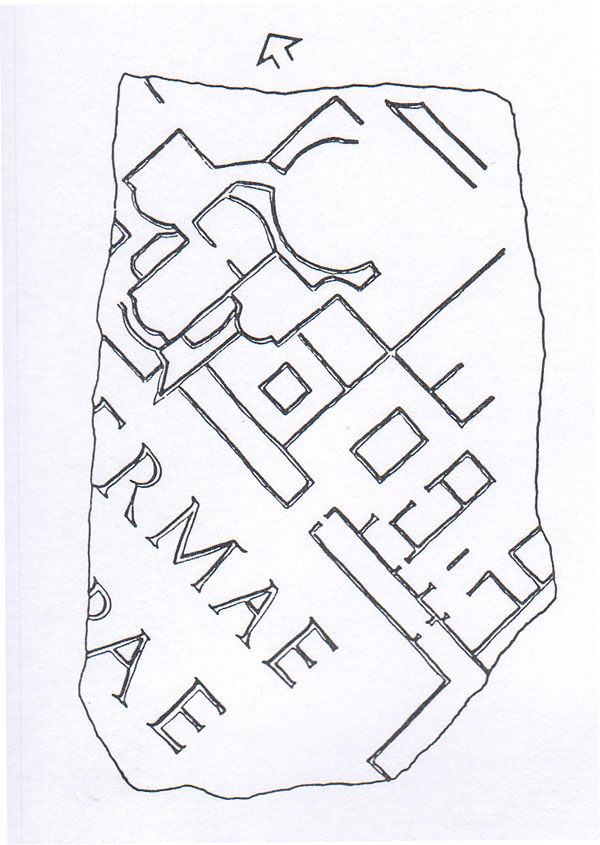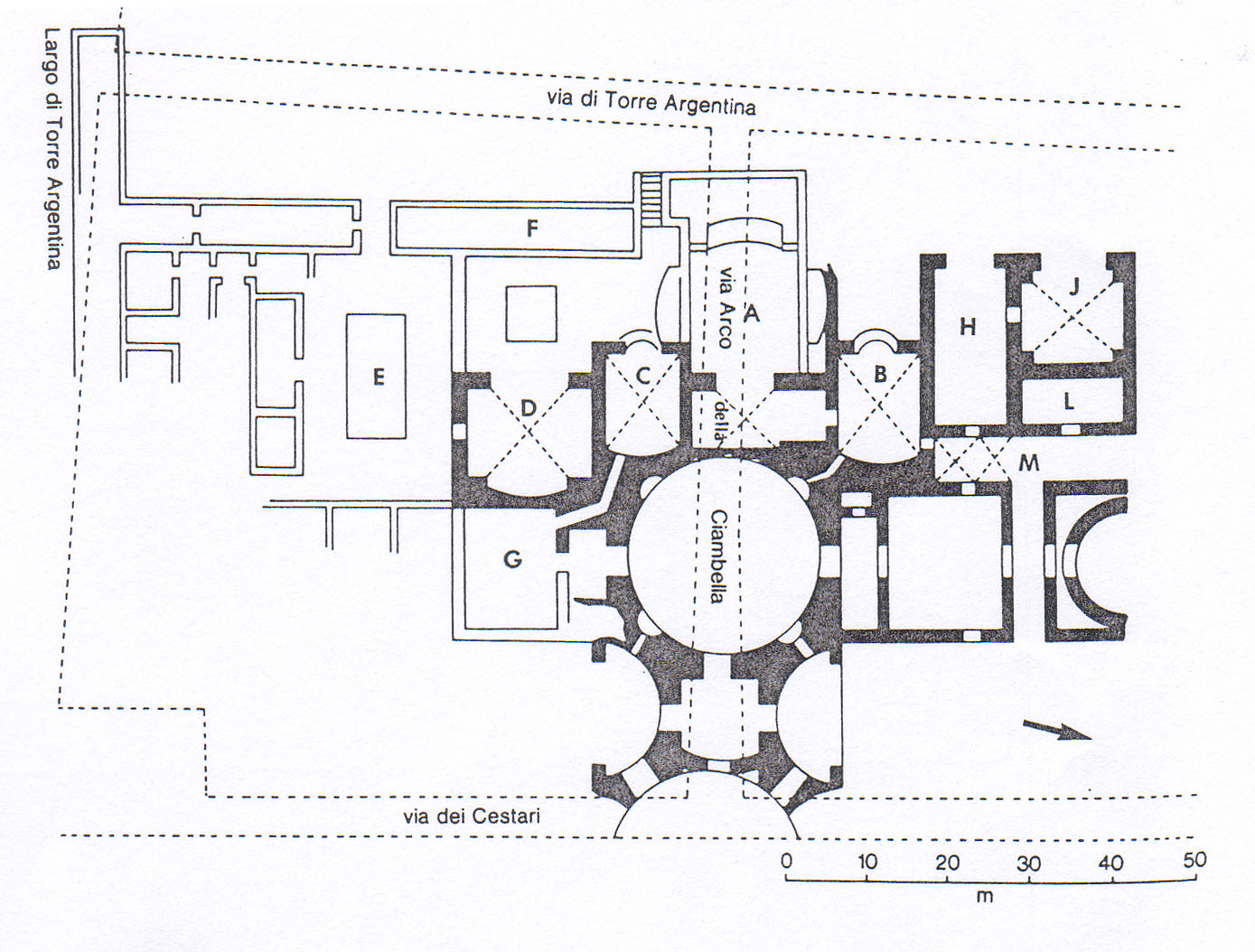Thermae Agrippae
Province
Italia
Italia (Pleiades)
Italia, Regio I (Pleiades)
Location
Sublocation
Region IX Circus Flaminius
Campus Martius (Pleiades)
Garden
Garden of the Thermae Agrippae
Thermae Agrippae (Pleiades)
Keywords
Garden Description
Knowledge of this thermae, or bathing complex, and its associated public gardens comes from textual evidence and the Severan Marble Plan (FUR) (Figs. 1–2). Located in the central Campus Martius, Agrippa’s thermae, the Thermae Agrippae, were associated with his horti; upon his death in 12 BCE, he left both to the Roman people, free of charge (Cass. Dio 54.29.4 | Trans.).
The horti included a grove with plane trees (Platanus orientalis) and an artificial-lake. Starting in 25 BCE, Agrippa constructed a gymnasium which he called Laconian sudatorium, after the Spartans who were famous for their exercise regimens (Cass. Dio 53.27.1 | Trans.). After 19 BCE, the Aqua Virgo supplied the complex and its grounds with an abundant source of fresh water (Frontinus Aq. 1.10), transforming it into a park and full-fledged bathing complex, the first of the imperial thermae.
In this complex, a grove (ἄλσος) was situated between two manmade bodies of water: a stagnum, a man-made lake, and a euripus, or canal (Strabo 13.1.19). Seneca the Younger reports that he used to celebrate the new year by jumping into the cold canal (associated with the Aqua Virgo) (Ep. 83.5); this suggests that the stagnum and euripus were also recreational spaces for the people of Rome. While there is no direct reference to swimming in the stagnum, the lake was a large enough space that Nero was able to enjoy a sumptuous banquet while floating on a raft (Tac. Ann. 15.37), suggesting that the stagnum could have had recreational purposes.
Agrippa also placed famous works of art within the complex. The baths contained famous paintings and elaborate decoration, including sculptures of animals, such as a bronze bear (Martial Ep. 3.19.1–2 | Trans.), and a lion by Lysippos in the grove (Strabo 13.1.19). In front of the complex was the famous Apoxyomenos ("the Body Scraper"), also by Lysippus (Plin. HN 34.62). The Hecatostylum, lying just south of the euripus, may have served as a covered walkway for the grove and functioned as a de facto boundary of the complex (Martial Ep. 3.19.1–2 | Trans.).
The Thermae burned in the fire of 80 CE (Cass. Dio 66.24 | Trans.) and was restored quickly by Titus or Domitian (Martial 3.20.15, 36.6 | Trans.). Restorations by Hadrian, Constantius and Constans are known. According to Sidonius Apollinaris, the baths are mentioned in the Regionary Catalogues and were still in use in the fifth century (Carm. 23.496 | Trans.).
Figures

Fig. 1. Marble Plan Fragment (Yegül, fig. 143, p. 134).

Fig. 2. Base Plan of the Thermae Agrippae (Yegül, fig. 145, p. 134, after Huelsen).
Dates
1st century BCE - 5th century CE
Bibliography
- F. Coarelli, “Il Campo Marzio Occidentale. Storiae e Topografia,” Mélanges de l’École française de Rome, Antiquité 89: 2 (1977), pp. 808–846. (worldcat)
- E.M. Steinby (ed.), Lexicon topographicum urbis Romae, s.v. "Campus Agrippae" (F. Coarelli), p. 217. (worldcat)
- E.M. Steinby (ed.), Lexicon topographicum urbis Romae, s.v. "Horti Agrippae" (F. Coarelli), pp. 51–52. (worldcat)
- E.M. Steinby (ed.), Lexicon topographicum urbis Romae, s.v. "Thermae Agrippae" (G. Ghini), pp. 40–42. (worldcat)
- F. Yegül, Baths and Bathing in Classical Antiquity, New York, 1992, pp. 133–137. (worldcat)
- J. Delaine, “Gardens in Baths and Palaestras,” Gardens of the Roman Empire, New York, 2018, pp. 165–184. (worldcat)
Pleiades ID
Contributors
ORCID
E.R. Macaulay (0000-0002-4551-7631)
Publication date
17 April 2021